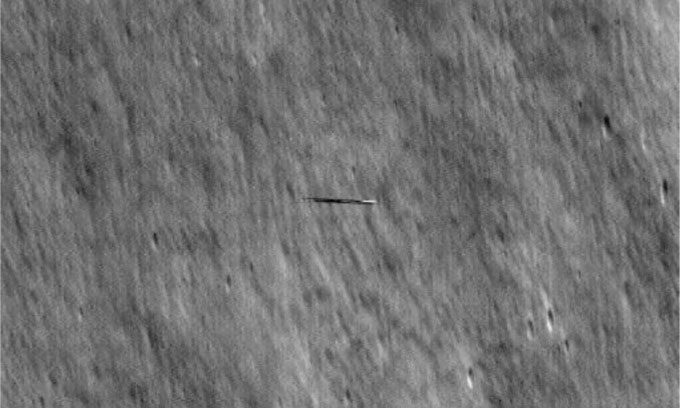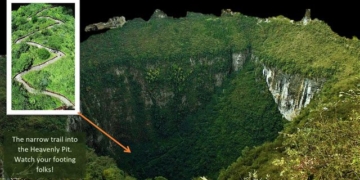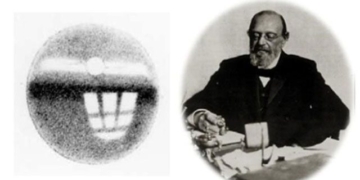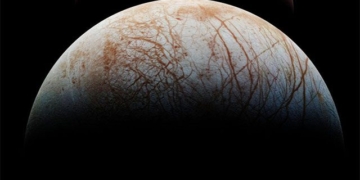The NASA lunar research spacecraft captured a fleeting moment of Danuri, the South Korean spacecraft operating in a nearly parallel orbit, zooming by.
NASA released a series of images featuring Danuri, also known as the Korea Pathfinder Lunar Orbiter (KPLO), which is operated by the Korea Aerospace Research Institute. The spacecraft was flying over the lunar surface at high speed, as reported by Newsweek on April 9. The Lunar Reconnaissance Orbiter (LRO) of NASA took these images on March 5-6, when both spacecraft were moving in nearly parallel orbits but in opposite directions.

LRO pointing its camera down to capture Danuri flying approximately 5 km above. (Photo: NASA/Goddard/Arizona State University).
In the newly released black-and-white images, Danuri appears as a blurry line cutting across the lunar surface. These photos were taken by the LRO operating team at NASA’s Goddard Space Flight Center using a narrow-angle camera as the spacecraft approached Danuri closely.
Even with a very short exposure time for the camera, the images of Danuri were blurred ten times its actual size due to the high relative speed between the two spacecraft, approximately 11,500 km/h. This speed required the operating team to time their shots very precisely to ensure the camera was aimed correctly at the right moment.
“It should be noted that the Danuri orbiter is not a strange, thin pixel block – it is quite a normal-looking orbiter. However, the incredible speed causes it to be blurred in the LRO camera“, explained Paul Byrne, an associate professor of planetary science, environment, and Earth at Washington University in St. Louis.
The LRO was launched by NASA’s Goddard Space Flight Center in 2009 to study the lunar surface and answer fundamental questions about the origins and evolution of this celestial body alongside Earth. The LRO orbits at an altitude of about 50 km above the lunar surface.
Meanwhile, Danuri was launched from the United States using a SpaceX rocket in August 2022. The spacecraft helps validate the technologies necessary for approaching and exploring the Moon. It will measure the magnetic field on the lunar surface, assess resource availability, and map the terrain to assist in selecting future landing sites. Danuri orbits the Moon with an orbital cycle of approximately two hours.




















































